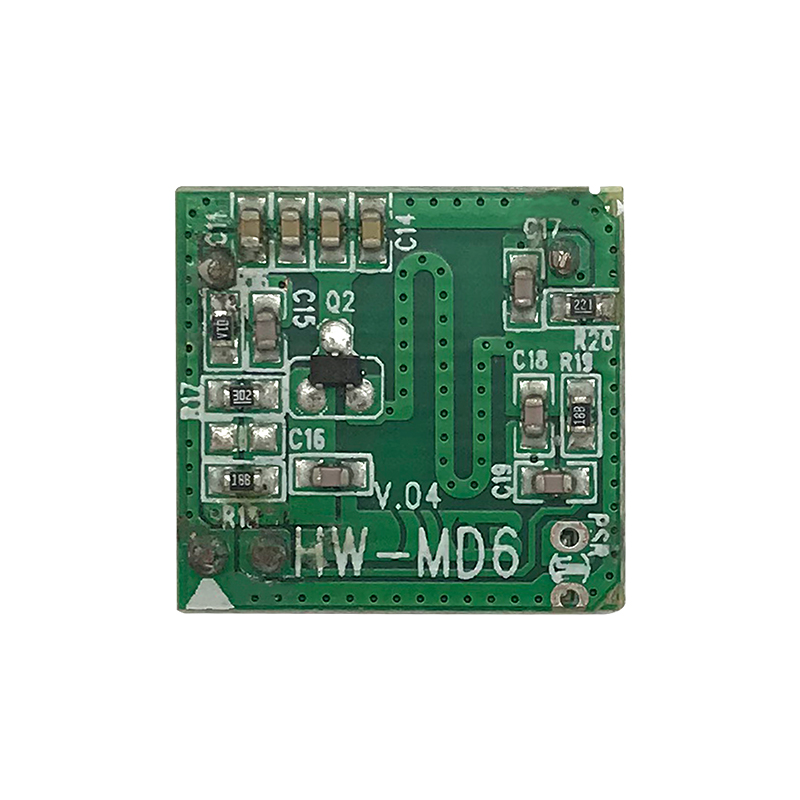 1004,West-CBD,No.139 Binhe Rd,Futian District,Shenzhen, China Post Code:518048
1004,West-CBD,No.139 Binhe Rd,Futian District,Shenzhen, China Post Code:518048
 +86-18682200597
+86-18682200597
 sales@szhaiwang.com
sales@szhaiwang.com
 1004,West-CBD,No.139 Binhe Rd,Futian District,Shenzhen, China Post Code:518048
1004,West-CBD,No.139 Binhe Rd,Futian District,Shenzhen, China Post Code:518048
 +86-18682200597
+86-18682200597
 sales@szhaiwang.com
sales@szhaiwang.com
source:Industry News release time:2022-01-25 Hits: Popular:Infrared sensing module

The radio frequency sensor is a small electronic device, a key element for realizing photoelectric conversion in various photoelectric detection systems. It is mainly a sensor that uses various properties of light to detect the presence or absence of objects and changes in surface conditions. Photoelectric sensors have the characteristics of non-contact, fast response, and reliable performance, so they are widely used in industrial automation devices and robots.
RF sensor
RF sensor is generally composed of three parts: light source, optical path and photoelectric element. The measured change is converted into a change in an optical signal, and then the optical signal is further converted into an electrical signal with the help of a photoelectric element.
Principle of photoelectric effect
The photoelectric element is the most important part of the radio frequency sensor, and its core working principle is different types of photoelectric effect. According to the wave-particle duality, light is composed of photons moving at the speed of light. When an object is illuminated by light, its internal electrons absorb the energy of the photon and change state, and its own electrical properties will also change. This phenomenon is called For the photoelectric effect.
According to different changes in electrical properties, the photoelectric effect is divided into the following three types:
1) External photoelectric effect
The phenomenon that electrons escape from the surface of an object under the action of light is called the external photoelectric effect. Photoelectric components based on external photoelectric effect include phototubes, photomultiplier tubes, etc.
2) Photoconductive effect
The phenomenon that electrons in a semiconductor cannot jump out of the semiconductor after absorbing a photon, changing the conductivity of the object, or generating a photoelectromotive force is called the internal photoelectric effect. The internal photoelectric effect can be divided into photoconductive effect and photovoltaic effect according to its working principle. Photoelectric components based on the photoconductive effect include photoresistors, phototransistors, etc.
Read recommendations:
Ntc water tank temperature probe
Three functions of NTC thermistor
MF55 103F3950F NTC Thermistor 10K 1% 3950
HW8004 Night light microwave sensor module,PIR sensor module
Popular Recommended Products
PIR Lens 7708-10
2021-12-09PIR Lens 7809
2021-12-09Z003
2021-11-27PND103F3950FTR311
2021-11-27PND103F3950FTP707(705) NTC Thermistor 10K 1% 3950
2021-11-27PIR Lens 7707-15
2021-12-09PIR Lens 8120-4
2021-12-09PIR Lens 8308-6
2021-12-09MF51 103F3950FL80 NTC Thermistor
2021-11-27HW-M09-2 microwave sensor module
2021-12-07PIR Lens 7704-2
2021-12-09Characteristics, specifications, and application range of 10k NTC thermistors.Body Movement Sensor
2023-06-26Human body temperature NTC sensor patch
2022-11-17What is the function of the ntc temperature control switch in the water dispenser
2022-05-24Seedling cultivation and growth device and NTC temperature sensor
2023-10-07NTC temperature control probe used on the wall breaking machine.PIR Module sales
2023-03-08NTC negative thermistor composition
2022-11-10Terminology for NTC temperature sensors.SMD light sensor
2023-07-03Classification of thermistors.Infrared digital sensor module
2022-04-19Pyroelectric infrared detection burglar alarm in simulation technology.Human Body Sensor Vendor
2022-10-15Magnetizing Inrush Current Limiting in NTC Switch Mode Power Supplies (SMPS).Infrared sensing module
2022-07-04
szhaiwang4@hotmail.com
+86-18682200597
sales@szhaiwang.com